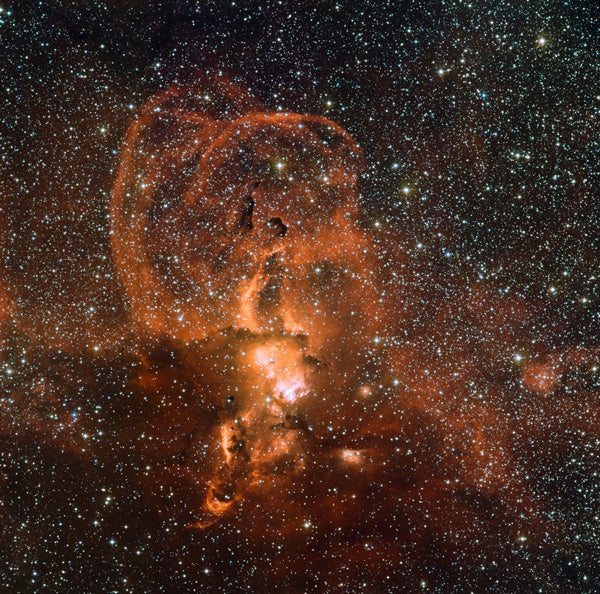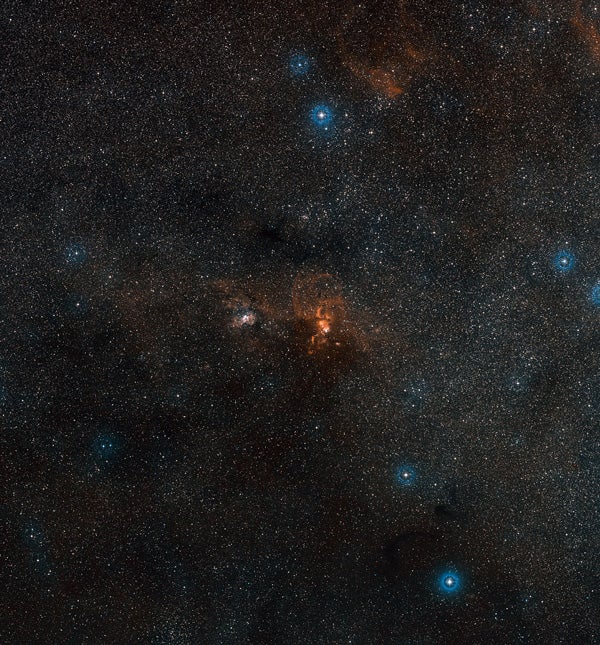This image of the nebula NGC 3582, which was captured by the Wide Field Imager on the MPG/ESO 2.2-meter telescope at the European Southern Observatory’s (ESO) La Silla Observatory in Chile, shows giant loops of gas bearing a striking resemblance to solar prominences. It is thought that dying stars ejected these loops, but new stars are also being born within this stellar nursery. These energetic youngsters emit intense ultraviolet radiation that makes the gas in the nebula glow, producing the fiery display shown here.
NGC 3582 is part of a large star-forming region in the Milky Way, called RCW 57. It lies close to the central plane of the Milky Way in the southern constellation Carina the Keel. John Herschel first saw this complex region of glowing gas and dark dust clouds in 1834 during his stay in South Africa.
This visible light wide-field image of the region around NGC 3582 was created from photographs taken through red and blue filters and forming part of the Digitized Sky Survey 2. The star formation region appears close to the center and is just one part of a vast complex of gas and dust in the southern Milky Way. The field of view is approximately 2.8 degrees across. ESO/Digitized Sky Survey 2. Acknowledgment: Davide De Martin
Some of the stars forming in regions like NGC 3582 are much heavier than the Sun. These monster stars emit energy at prodigious rates and have short lives that end in explosions as supernovae. The material ejected from these dramatic events creates bubbles in the surrounding gas and dust. This is the probable cause of the loops visible in this picture.
This image was taken through multiple filters. From the Wide Field Imager, data taken through a red filter are shown in green and red, and data taken through a filter that isolates the red glow characteristic of hydrogen are also shown in red. Additional infrared data from the Digitized Sky Survey are shown in blue.











